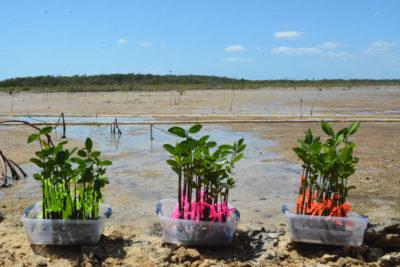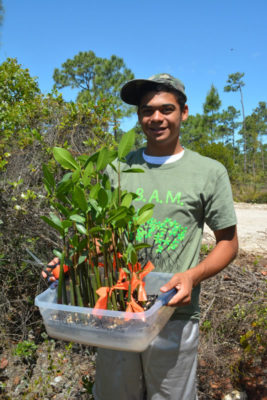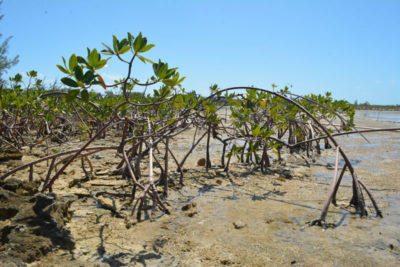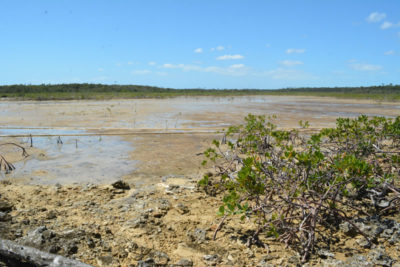Mangrove Education and Restoration Program Blog
I’m back in the Bahamas for the final installment of the Bahamas Awareness of Mangroves (B.A.M.) program. Students from Abaco Central High School and Forest Heights Academy have been successfully growing red mangrove propagules (seedlings) in the classroom for the past 7 months. Now, we are ready to return the seedlings to Camp Abaco, our mangrove restoration site, where students will be acclimating mangroves and then transplanting them, restoring part of the mangrove forest.

Red mangrove propagules that the students have been growing in their classroom.
For the duration of the program, the propagules have been growing in fresh water. For the past few weeks our partners at Friends of the Environment have been helping each school to acclimate the propagules to salt water, so that they can easy adapt to their natural environment when we plant them.

FRIENDS of the Environment intern, Christian McIntosh is ready to plant the mangroves at Camp Abaco after adapting them to salt water.
In their natural environment, the salinity (the amount of dissolved salt in water) can be quite high. We measure salinity in parts per thousand (ppt). This measurement probably doesn’t mean much, so let me explain. If we have 1,000 buckets of ocean water, 35 of those buckets will be filled with salt and the other 965 contain freshwater. In this situation, the salinity of the ocean is 35 ppt.

Red mangrove trees at Camp Abaco.

Camp Abaco, mangrove restoration site.
To give a little perspective, the average salinity of the ocean is 35 ppt; however, the salinity at Camp Abaco is currently around 45-50 ppt. Chances are the salinity will continue to rise as summer approaches creating even harsher conditions for the mangroves. As the temperature heats up, the freshwater will evaporate, causing the salinity to rise. Red mangroves can tolerate salinities of up to 65 ppt; however, our propagules could be shocked by the high salinity levels, which could cause them to die. By acclimating the mangroves, we are giving the propagules to best chance of survival possible.
Now that the propagules have adapted to this saline environment, we are ready to transplant them back into the wild!
Stay tuned for more information about our mangrove restoration efforts.
If you missed our past B.A.M. blogs check them out here.